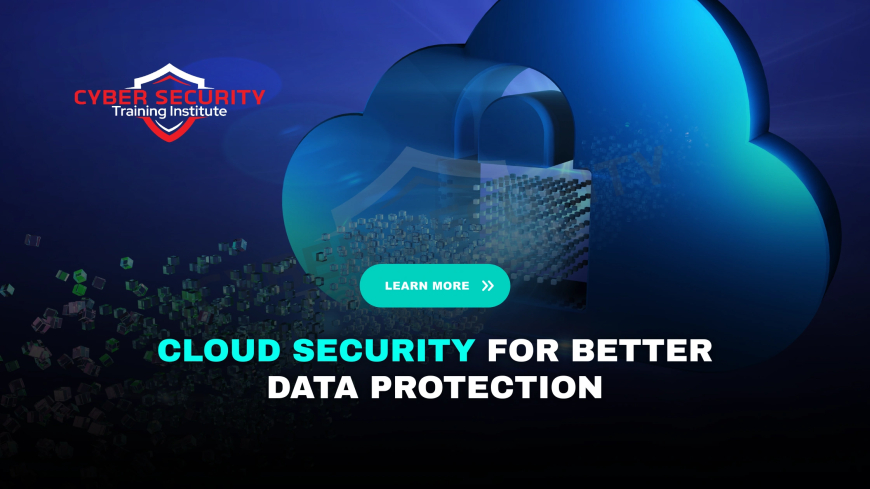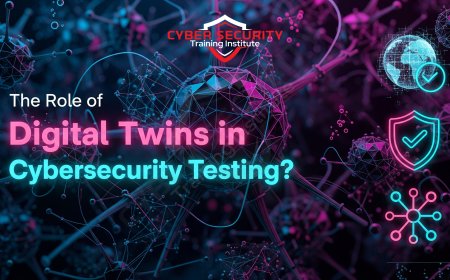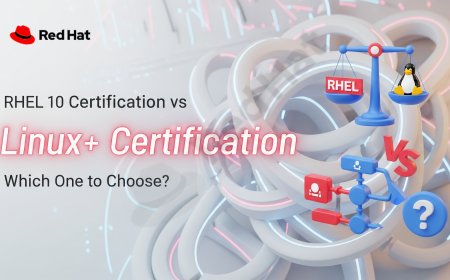How Can Cloud Security Improve Data Protection in Schools?
Picture this: It's a busy Monday morning in a typical elementary school. Teachers are logging into online platforms to check lesson plans, students are submitting assignments via apps, and administrators are handling sensitive records like health forms and grades. Suddenly, a cyberattack hits—a hacker exploits a weak spot in the school's old on-site server, stealing personal data on hundreds of kids. Chaos ensues: classes disrupted, parents in panic, and the school facing potential lawsuits. This isn't fiction; it's a growing reality. In 2025, data breaches in education have skyrocketed, with 82% of K-12 schools experiencing at least one cybersecurity incident between July 2023 and December 2024. Ransomware attacks alone jumped 23% in the first half of 2025. But here's the good news: cloud security can be a game-changer, offering robust tools to protect this vital data without breaking the bank. Cloud security refers to the technologies and practices that safeguard data stored in the cloud—think remote servers managed by providers like AWS or Google Cloud. Instead of keeping everything on local computers that can fail or be hacked easily, schools can shift to the cloud for better protection. This isn't just about avoiding hacks; it's about creating a safe digital space where learning thrives. With remote and hybrid models still popular post-pandemic, schools handle more data than ever: student info, financial records, even AI-driven personalized learning tools. Poor protection can lead to identity theft, disrupted education, and legal headaches under laws like FERPA in the US. In this blog, we'll explore how cloud security steps up data protection in schools. We'll cover the basics, benefits, real-world examples, and practical tips. Whether you're a teacher curious about tech, an admin worried about budgets, or a parent concerned for your child's privacy, this guide is for you. We'll keep it simple, explain terms as we go, and focus on real impacts. By the end, you'll see why moving to the cloud isn't just trendy—it's essential for safer schools in 2025.

Table of Contents
- Understanding Cloud Computing in Education
- The Importance of Data Protection in Schools
- How Cloud Security Works
- Key Benefits of Cloud Security for Data Protection
- Implementing Cloud Security in Schools
- Challenges and Solutions
- Case Studies: Real-World Success
- Comparison Table: On-Premise vs. Cloud Security
- Conclusion
- FAQs
Understanding Cloud Computing in Education
Cloud computing might sound fancy, but it's basically storing and accessing data over the internet instead of on your own hard drives. Think of it like renting space in a massive, secure warehouse rather than keeping everything in your garage. In education, this means tools like Google Classroom or Microsoft Teams, where files are saved online and accessible from anywhere.
Schools use the cloud for everything from storing student records to running virtual classes. It's grown hugely since the pandemic, with many institutions now relying on it for daily operations. But with great convenience comes great responsibility—especially for security. Cloud providers handle the heavy lifting, offering features like automatic updates and backups that local systems often lack.
Why does this matter? Traditional on-premise setups—where data is kept on school servers—are prone to failures. A power outage or hardware crash can wipe out data. Cloud systems, however, spread data across multiple locations, ensuring it's always available. Plus, they come with built-in security that's constantly updated against new threats.
For beginners, start thinking of the cloud as a partner, not a mystery. It enhances collaboration—students can work on group projects in real-time—and scales easily as schools grow. But the real star is security, which we'll dive into next.
The Importance of Data Protection in Schools
Data protection isn't optional; it's a must. Schools hold sensitive info: names, addresses, medical histories, and more. A breach can lead to identity theft or bullying if private details leak. In 2025, UK stats show 60% of secondary schools faced breaches in the last year, with phishing being the top issue. Globally, education ranks high in compromises, with over 173 in the US alone recently.
Legal risks are huge. Laws like GDPR in Europe demand strict protection, with fines up to 4% of revenue for violations. In the US, FERPA protects student records, and non-compliance can cut funding. Beyond laws, there's trust: Parents expect schools to safeguard their kids' info as much as their physical safety.
Threats include ransomware—locking data until paid—and DDoS attacks that crash sites. With kids using devices, risks multiply. Good protection prevents disruptions, saves money on recovery, and supports better learning. Cloud security addresses these by offering advanced defenses schools couldn't afford alone.
In short, strong data protection builds a foundation for innovation. Without it, schools risk falling behind in a digital world.
How Cloud Security Works
Cloud security is a multi-layered approach. At its core, it's about protecting data in transit (moving) and at rest (stored). Providers use encryption—scrambling data so only authorized users can read it.
Key elements include:
- Identity management: Controls who accesses what, like multi-factor authentication (MFA)—an extra step beyond passwords.
- Threat detection: AI scans for unusual activity, flagging potential hacks.
- Backups: Automatic copies ensure data recovery after incidents.
- Compliance tools: Help meet laws like COPPA for kids' privacy.
- Firewalls and monitoring: Block threats and watch traffic 24/7.
Unlike local setups, cloud providers invest billions in security, giving schools enterprise-level protection. It's like having a team of experts on call. For schools, this means less worry about updates—providers handle them automatically.
Imagine a teacher uploading grades: The cloud encrypts it, checks access, and backs it up. If a hack tries, alerts go out instantly. Simple, yet powerful.
Key Benefits of Cloud Security for Data Protection
Switching to cloud security brings tangible perks. First, enhanced accessibility with safety: Teachers and students access data remotely without risking exposure.
Cost savings are big. Schools avoid buying expensive hardware; pay-as-you-go models fit tight budgets. Plus, reduced downtime from attacks means more teaching time.
Scalability: As enrollment grows, cloud expands easily. Security scales too, handling more users without weak spots.
Advanced features like AI-driven scans detect threats early, something local IT can't match. Collaboration improves—share files securely across districts.
Backup and recovery: Cloud's robust systems restore data fast after disasters. Finally, compliance is easier with built-in tools for audits and reports.
These benefits make schools resilient, turning data protection from a chore to a strength.
Implementing Cloud Security in Schools
Getting started? Assess needs: What data do you handle? Then choose a provider—look for education-focused ones like Google for Education.
Steps include:
- Migrate data gradually, starting with non-sensitive files.
- Train staff: Simple sessions on MFA and phishing awareness.
- Set policies: Define access rules and incident responses.
- Monitor regularly: Use provider dashboards for insights.
- Partner with experts: If needed, consultants can help.
Budget-wise, start small. Many offer free tiers for schools. Remember, implementation is ongoing—regular audits keep things tight.
One tip: Involve everyone. When staff understand why, adoption soars.
Challenges and Solutions
No system's perfect. Challenges include integration with old systems—solution: Hybrid approaches blending cloud and on-premise.
Privacy concerns: Ensure providers comply with laws. Training gaps: Mandatory workshops fix this.
Cost overruns: Plan budgets carefully. Vendor lock-in: Choose flexible providers.
Cyber threats evolve, so stay updated via CISA guidelines. With proactive steps, challenges become manageable.
Case Studies: Real-World Success
Take Shawnee Heights USD: They used Cisco for iPads, gaining visibility and blocking threats.
IDEA Public Schools switched to iboss Zero Trust, securing internet access for students.
Nampa School District went cloud with Tyler Tech, enhancing security and instruction prep. These show reduced breaches and better efficiency.
Comparison Table: On-Premise vs. Cloud Security
| Aspect | On-Premise Security | Cloud Security |
|---|---|---|
| Cost | High upfront, maintenance ongoing | Pay-as-you-go, lower overall |
| Scalability | Limited, needs hardware upgrades | Easily scales with demand |
| Updates | Manual, often delayed | Automatic and frequent |
| Backup/Recovery | Manual, prone to errors | Automated, redundant |
| Threat Detection | Basic, resource-limited | AI-powered, advanced |
Conclusion
Cloud security transforms data protection in schools, offering robust defenses against rising threats. From encryption and AI detection to easy backups and compliance, it addresses key vulnerabilities while enabling better learning. We've seen benefits like cost savings and scalability, plus real successes in districts. Challenges exist, but with best practices, they're surmountable. In 2025, embracing cloud security isn't optional—it's key to safe, innovative education. Start small, train your team, and watch your school thrive securely.
What is cloud security?
Cloud security involves technologies and practices to protect data stored and accessed via the internet, like in remote servers.
Why do schools need cloud security?
Schools handle sensitive student data and face increasing cyber threats, making strong protection essential to prevent breaches.
How does cloud security protect data?
It uses encryption, access controls, and AI to safeguard data from unauthorized access and attacks.
What are the main benefits for schools?
Benefits include cost savings, scalability, automatic updates, and better threat detection.
Is cloud security expensive?
No, it's often more affordable with pay-as-you-go models compared to maintaining on-site servers.
What is encryption?
Encryption scrambles data so only authorized people can read it, like a digital lock.
How does cloud help with backups?
Cloud providers automatically create multiple copies of data for quick recovery after incidents.
What is multi-factor authentication?
MFA adds an extra verification step, like a code on your phone, beyond just a password.
Can small schools use cloud security?
Yes, many providers offer scalable solutions suitable for any size, with free tiers available.
What threats does it address?
It tackles ransomware, phishing, and data breaches common in education.
How to start implementing it?
Assess your needs, choose a provider, migrate data gradually, and train staff.
Does cloud comply with laws like FERPA?
Yes, reputable providers have tools to help meet privacy regulations.
What about internet dependency?
While it needs connectivity, offline modes and redundancies minimize issues.
Is data safer in the cloud?
Often yes, due to provider expertise and resources beyond what schools can afford.
What is AI in cloud security?
AI scans for threats automatically, detecting anomalies faster than humans.
Can cloud security improve collaboration?
Yes, by allowing secure sharing of resources in real-time.
What if there's a breach?
Cloud systems have incident response plans for quick mitigation and recovery.
Are there training resources?
Many providers offer free guides and sessions for educators.
How does it help remote learning?
It ensures secure access from anywhere, supporting hybrid models.
What's the future of cloud in education?
More integration with AI and IoT for smarter, safer schools.
What's Your Reaction?
 Like
0
Like
0
 Dislike
0
Dislike
0
 Love
0
Love
0
 Funny
0
Funny
0
 Angry
0
Angry
0
 Sad
0
Sad
0
 Wow
0
Wow
0







![How to Install RHEL 10 on VMware/VirtualBox [Tutorial]](https://www.cybersecurityinstitute.in/blog/uploads/images/202509/image_430x256_68b56dc967a4a.jpg)








